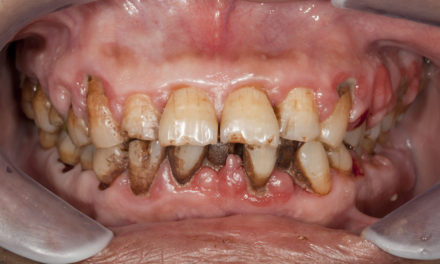Jaw-dropping research explains mouth formation during embryonic development
By Nicole Giese Rura
“All biological holes—openings—that form in the embryo are fascinating because they would become a catastrophic wound if they do not form precisely,” says Whitehead Member Hazel Sive, who is also a professor of biology at MIT. “We call these ‘scheduled holes’ and the mouth is a crucially important example. Mouth formation involves many steps that ensure the opening happens at the right time and at the right place— when the cells are connected with the correct junctions to be exposed to the outside and where the opening connects to a prepared region, in the case of the mouth to the digestive system. But I was so surprised when we found that this process is initiated in frogs several days before the mouth actually opens.”
The Sive lab has studied mouth formation during embryonic development in Xenopus frogs for many years. Because mouth formation occurs early in embryonic development and is highly conserved across species, model organisms, such as frogs and fish, provide fundamental insights into key developmental events that are difficult to observe and study in humans.
In the most recent work Sive lab researchers led by Laura Jacox, then a graduate student pursuing a dual DMD-PhD degree through the Harvard School of Dental Medicine and the Harvard-MIT Health Sciences and Technology program, monitored a region of the embryo known as the Extreme Anterior Domain (EAD). Within the EAD, which the Sive group has identified as the earliest element of facial development, they noted that a group of cells reorganizes to form a “pre-mouth array” that indicates where the mouth opening will later form.
The pre-mouth array begins as a square, eight cells wide and high, and morphs into a two-cell wide by twenty tall column. This transformation is a process called convergent extension, a crucial embryonic mechanism of cell reorganization. As the larvae prepares to begin feeding, the two rows of cells unzip down the middle to surround the oral opening that connects the digestive system to the outside.
The team observed that pre-mouth array formation occurs as ‘neural crest’ cells (that later form bones and muscles of the face) come to lie on either side of the EAD. They proposed that these cells send a signal to EAD cells instructing them to reorganize and form the pre-mouth array. Supporting this proposal, they showed that the neural crest and the Wnt/PCP signaling pathway, specifically a Wnt11 signal, triggers pre-mouth array formation.
Jacox acknowledges that this research clarifies a piece of a highly complex, carefully orchestrated process.
“There’s a lot of craniofacial development that we don’t understand,” says Jacox, a co-author of the Cell Reports paper who will soon become a resident in orthodontics at the University of North Carolina Chapel Hill. “If we hope to understand why craniofacial anomalies happen in humans and how to treat them at an earlier point to avoid years of surgery and orthodontics, we need to obtain a better handle on what’s going on. Recognizing what is required to form a mouth and the face and how it’s regulated is a step toward understanding how these processes can be disrupted.”
This work on mouth formation during embryonic development was supported by the National Institute of Dental and Craniofacial Research (NIDCR 1R01 DE021109-01 and F30DE022989) and Harvard University’s Herschel Smith Graduate Fellowship.
* * *
Hazel Sive’s primary affiliation is with Whitehead Institute for Biomedical Research, where her laboratory is located and all her research is conducted. She is also a professor of biology at Massachusetts Institute of Technology.
* * *
Full Citation:
“Formation of a ‘‘pre-mouth array’’ from the extreme anterior domain is directed by neural crest and Wnt/PCP signaling“
Cell Reports, August 2, 2016.
Laura Jacox (1,2,3,4,5), Justin Chen (1,2), Alyssa Rothman (1,2). Hillary Lathrop-Marshall (1,3) and Hazel Sive (1,2).
- Whitehead Institute for Biomedical Research, 9 Cambridge Center, Cambridge, MA 02142, USA
- Massachusetts Institute of Technology, 77 Massachusetts Avenue, Cambridge, MA 02139, USA
- Harvard School of Dental Medicine, 188 Longwood Avenue, Boston, MA 02115, USA
- Harvard-MIT Health Sciences and Technology Program, Harvard Medical School, 250 Longwood Avenue, Boston, MA 02115, USA
- Biological Sciences in Dental Medicine Program, Harvard Graduate School of Arts and Sciences, 1350 Massachusetts Avenue, Holyoke Center 350, Cambridge, MA 02138, USA







